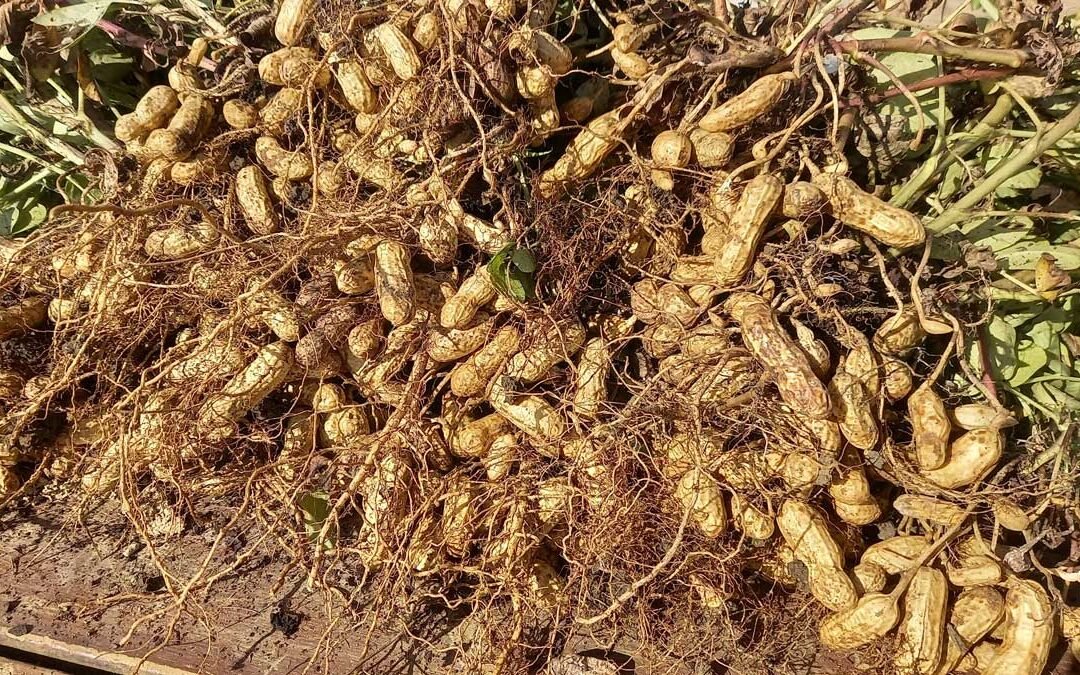A couple of years ago I got all excited to grow peanuts. I purchased some seed from TradeMe and wrote an entire post about their unique growing habits, and I how I planned to grow them.
Then it rained all summer long and we endured some pretty major weather events. All my best-laid plans for the season went awry, including the peanuts.
When I harvested them, I wrote another post about how I was going to cure them and what I’d learned. But I didn’t end up recording much beyond that.
In my first year, Instagram reminds me that I collected about 3/4 cup of peanuts. I squirrelled away my best nuts to use for seed the next season and roasted the rest to eat while watching Taskmaster.
Late 2023
In November last year, I quietly direct-sowed my seed into a garden bed. So quietly I can’t pin down an exact date I did it!
True to my word, I planted them closer together. But being so close made mounding difficult, so that didn’t really happen this time around.
Still, they thrived all summer until I lifted them again in April.
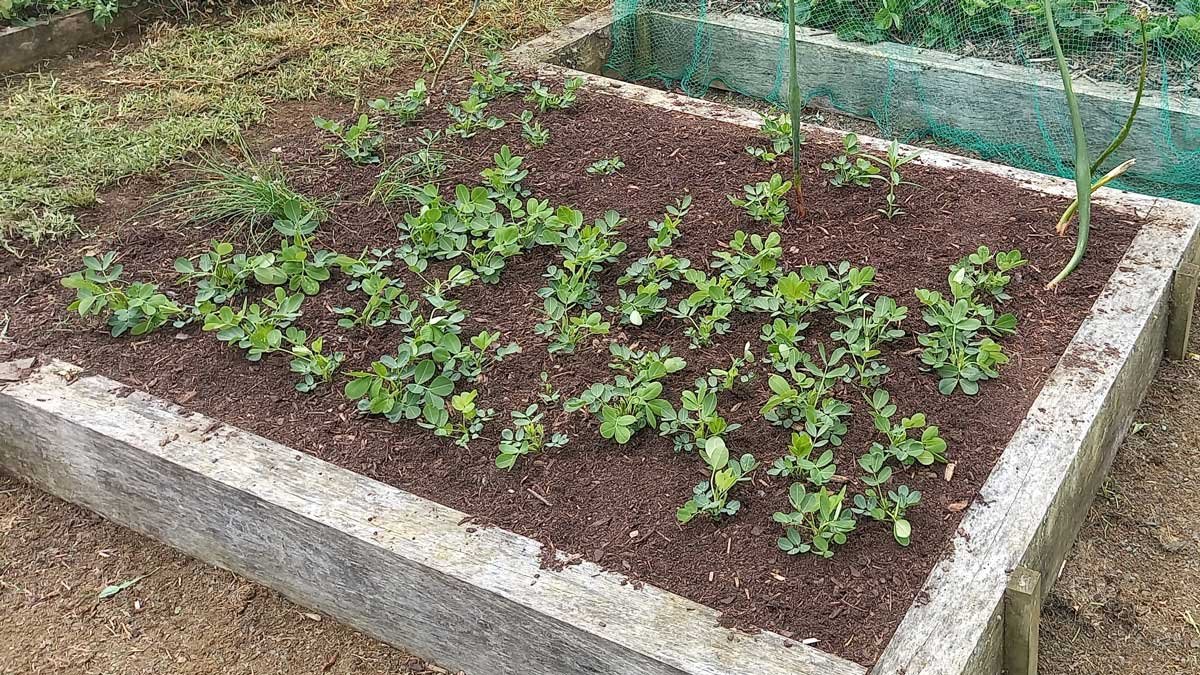
December 28 2023 – most plants are established in the bed.
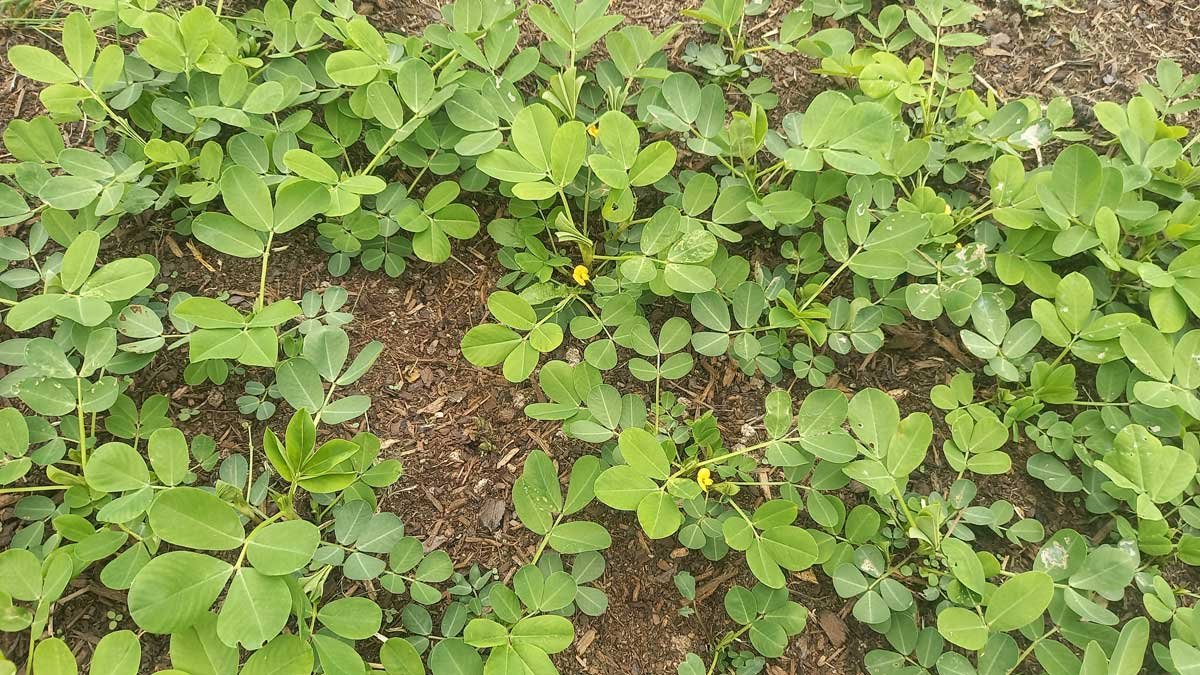
January 2 2024 – flowers begin appearing.
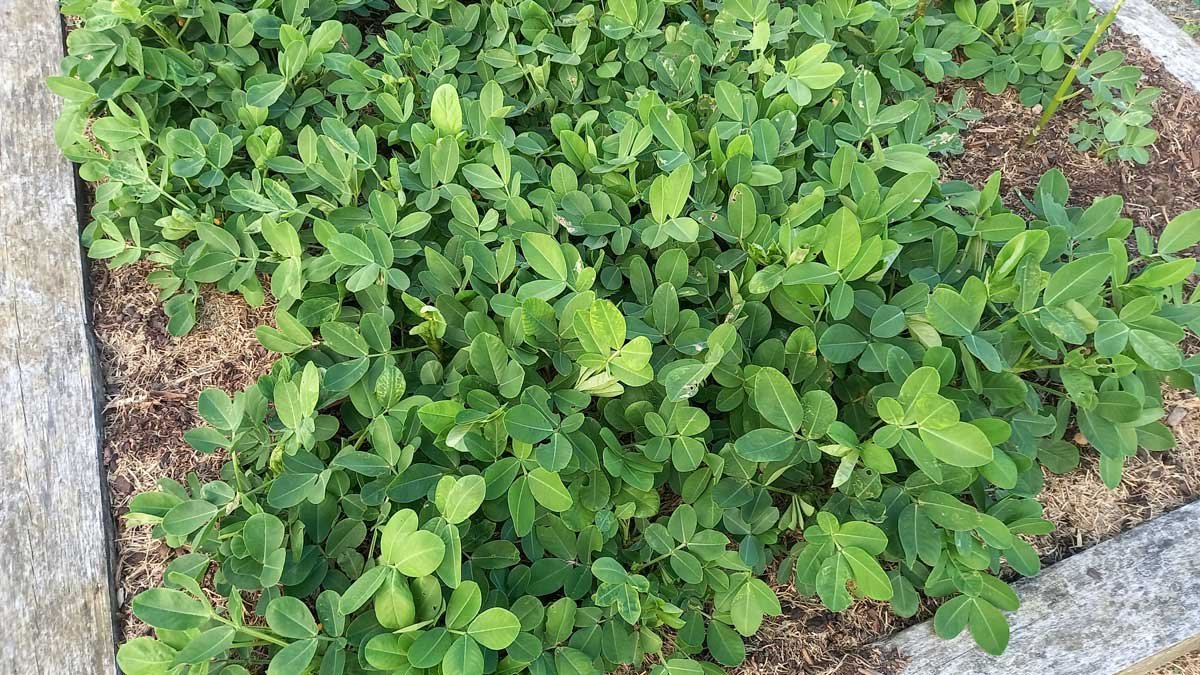
January 18 2024 – foliage now covering most of the garden bed area.

March 23 2024 – a chicken took a dust bath in the peanut bed, exposing the growth to date.
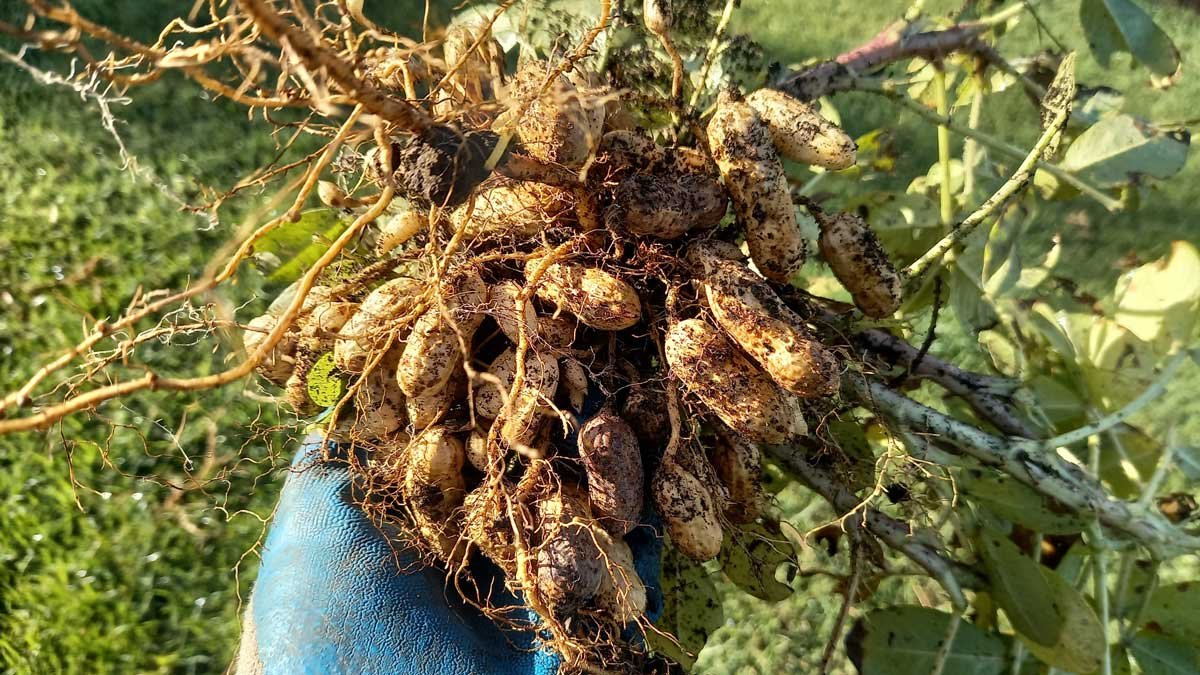
April 23 2024 – harvested ‘seed’ plant.
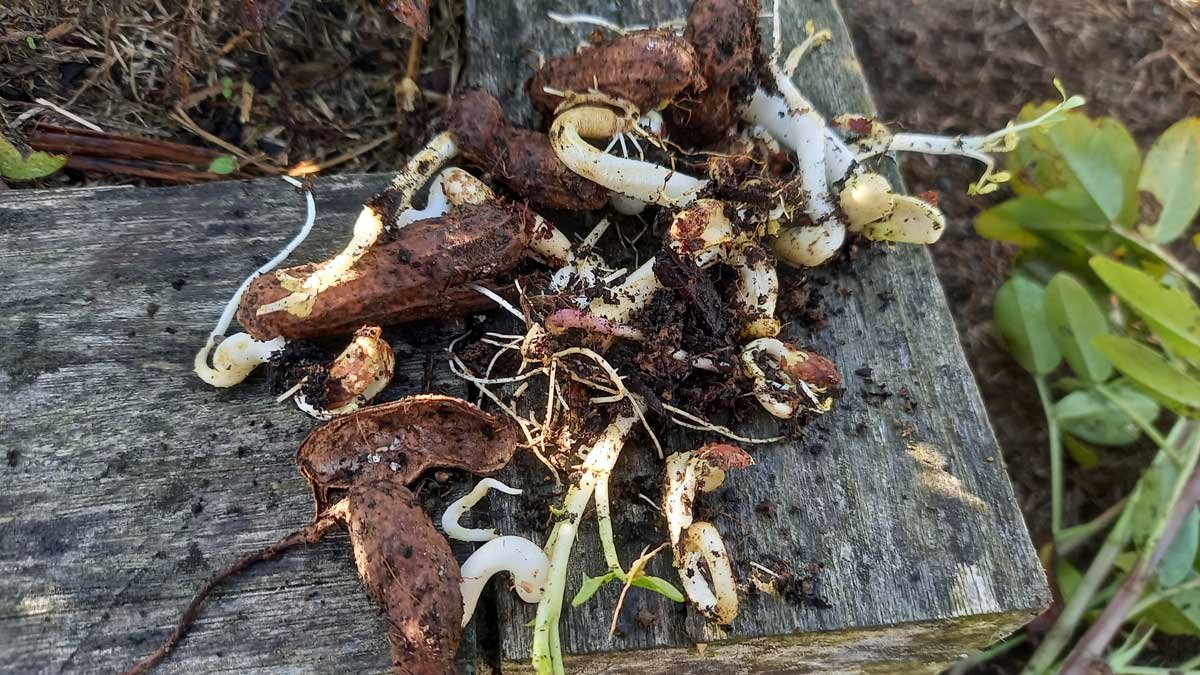
April 23 2024 – sprouted peanuts found during harvest.
Since harvest, they’ve just been hanging out in our container in drying racks. Processing the peanuts is A Job, and I wasn’t in a rush to get around to it.
But a new season is coming up, and the fact I didn’t really record my results in the first year is bugging me a bit. So let’s look at the harvest.
The eaters
When I harvested the plants, most of them were OK. A few peanuts on them.
I harvested the peanuts after a big rain, and in hindsight I wish I’d done it a week or so earlier, before that system rolled through. A number of nuts had begun sprouting again by the time I got there. I also lost a number to what I suspect to be fungal issues.
All of these plants became ‘eaters’. I’m not going to bother to save seed off an average plant. But those plants still produced some good nuts, and I will eat them.
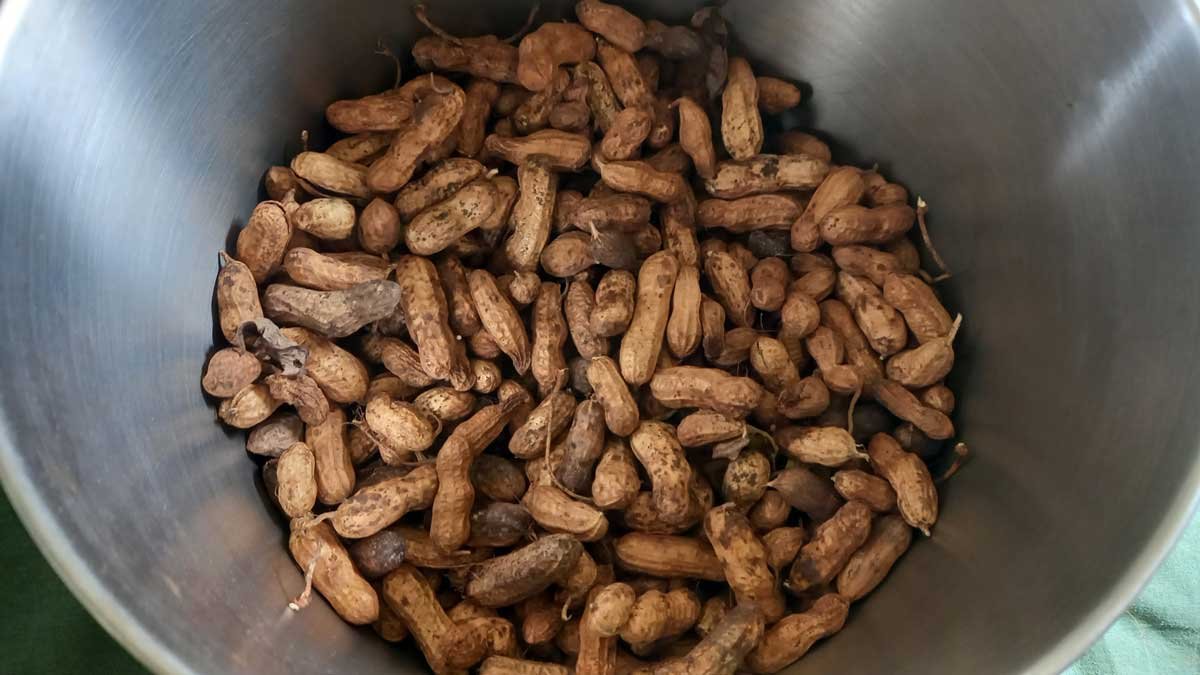
After processing the nuts off the plant – and then out of their shell – I had 409g of raw peanuts for eating from the 2023-24 peanut season.
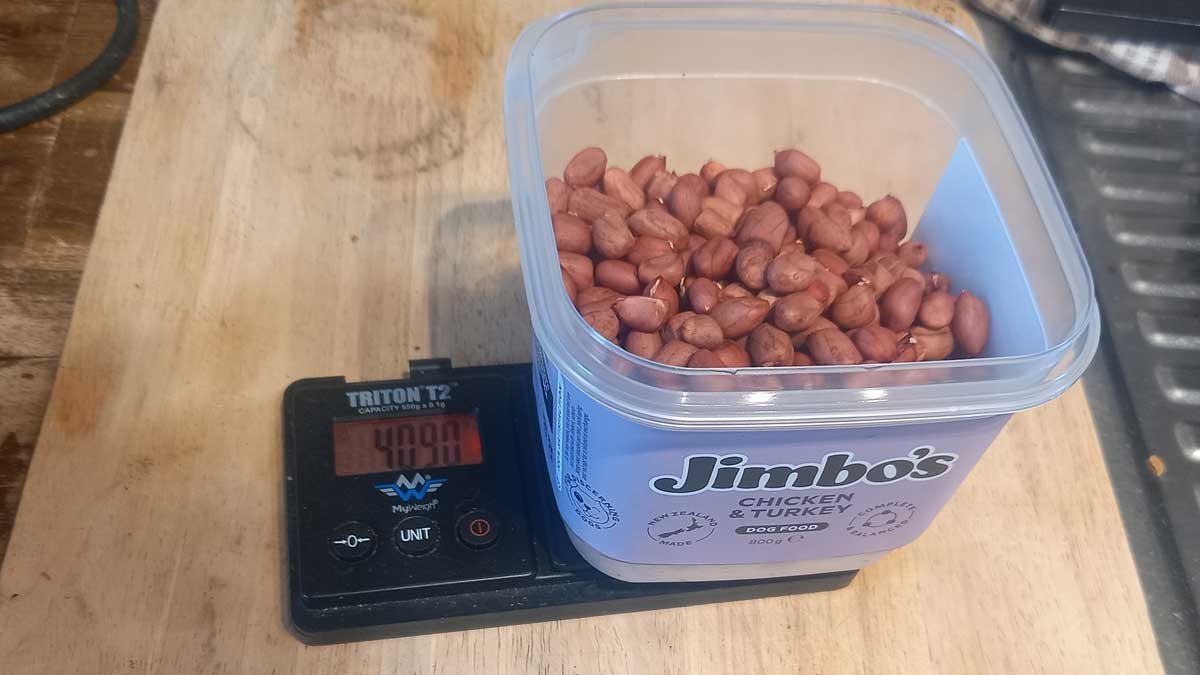
I looked it up. That’s about $4 worth of peanuts if I were to buy them at my local supermarket.
The seed
Every so often I’d come across a plant that was heaving with big nuts. I kept them aside to save for seed.
Over time, I’m hoping that this selective breeding will create a crop that reliably does well in my garden. I expect it to take years, but in theory at least, it should work.
The ‘seed plants’ were dried separately to the ‘eaters’ so I could easily tell the difference months later when it came to processing them.
Again, there was a couple of hours of processing. The smaller and damaged nuts went in with the ‘eaters’, leaving me with 200g of seed peanuts for the upcoming summer.
I think that’s about double last year’s seed stash. So that jar of homegrown, homemade peanut butter is potentially closer to fruition.
But I don’t think we’re there yet. I did have enough for a batch of peanut brownies though.
Making peanut brownies
I happen to love peanut brownies, so I decided I was definitely making them this year. I don’t have a secret recipe or anything – the Edmonds Cookbook version is my go-to.
The problem here was that after you grow, harvest, and process the peanuts out of their shells, there’s still another step – you’ve got to get the skin off too!
My memory of this job last year was that it was a frustrating one, and it’s probably why I put all this off for so long.
Last year, I discovered the roasting method was the most effective. So I took the cup of peanuts I’d need to make brownies and roasted them on an oven tray for 5 minutes at 170ºC. That crisps up the skin and makes it easier to flake it off.
Once they cooled, I wrapped them in a clean tea towel and bashed them around a bit. Then I sifted off the peanuts, shook off the skins outside, and repeated that a couple of times until I had a batch of mostly-skinless, slightly-roasted peanuts.
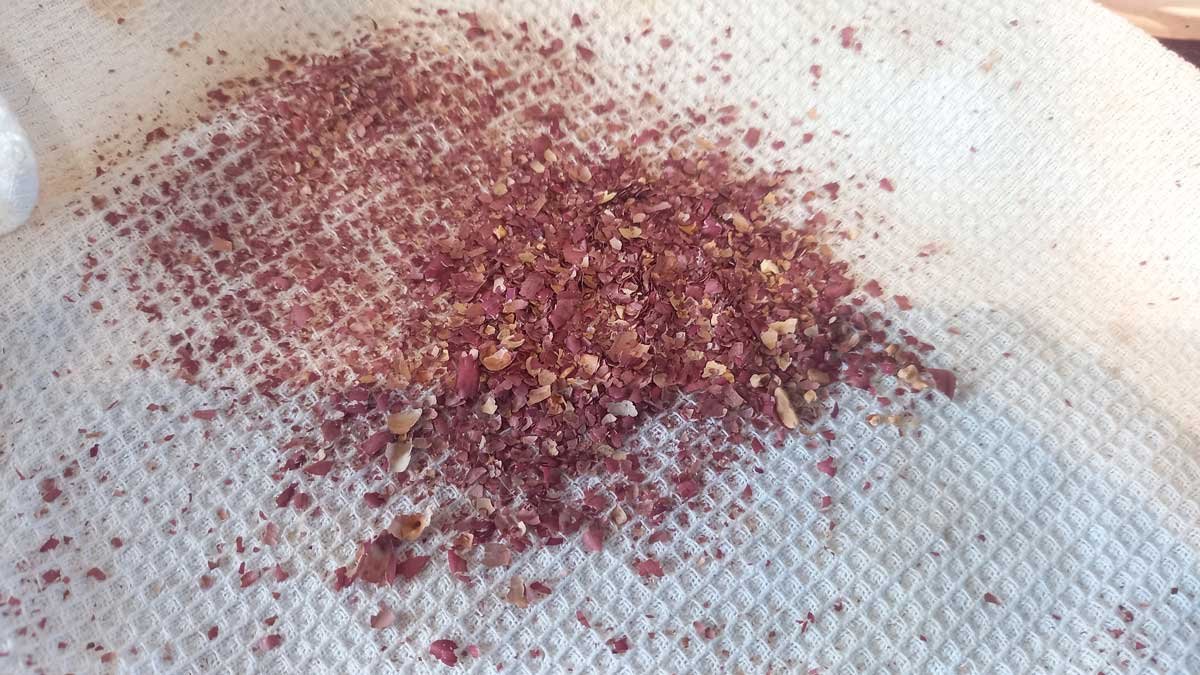
Skin flakes left on the tea towel after the first bash.

This is after round 1 – they went back another couple of times before I cooked with them
Only then could I actually make that batch of brownies
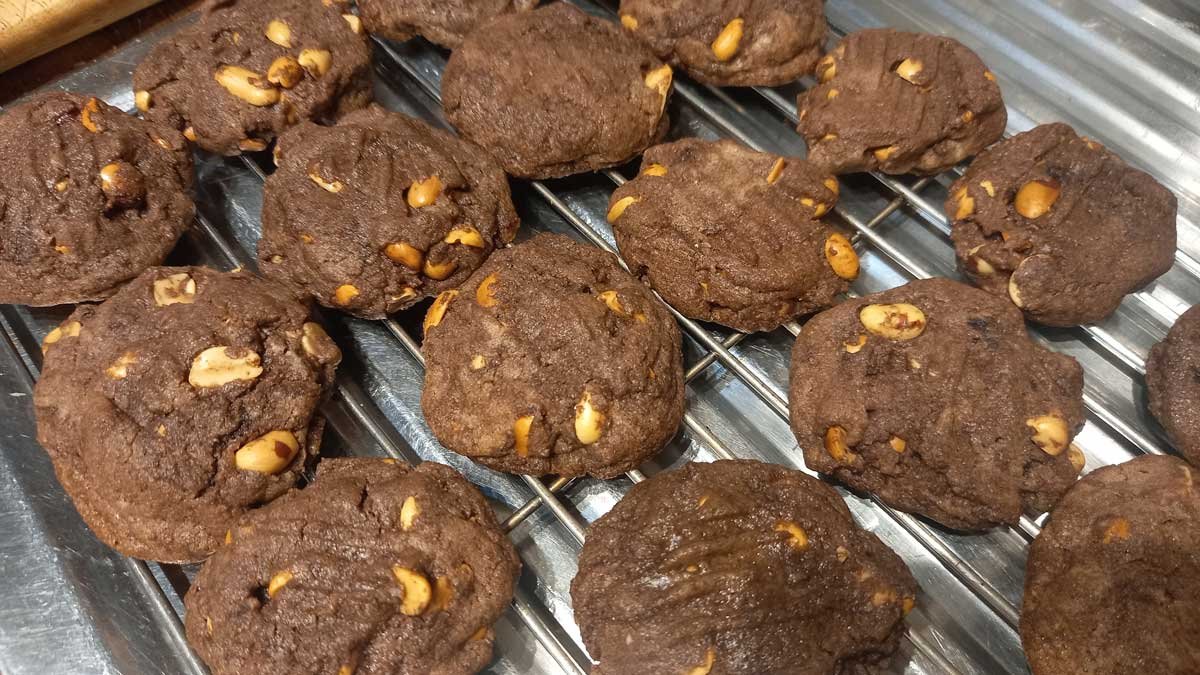
Is it worth it?
I’ll tell you one thing: growing peanuts will in no way save you time or money. The fact you can get a bag of roasted salted peanuts for less than $80 is a miracle of agricultural and manufacturing systems, honestly.
The actual growing of the peanuts is a fun activity, and I reckon it’s one every child especially should take a crack at on a small scale. Peanuts are weird little dudes and there’s joy and wonder in growing them. They’re not too difficult to grow, and while it hasn’t been perfect, I haven’t suffered any major pests or diseases.
But it’s pretty hard to judge when they should be harvested. And once they are up, there’s a few rounds of processing (drying, removing pods from the plant, removing peanuts from the shell, and peeling the skin) before they’re actually edible.
And that’s fun on a small scale, but the bigger your crop, the more work there is to do on the processing side of things. It’s labour-intensive, and there’s a lot to be said for mechanical harvesters and processing machines.
I am planning to grow my seed out again this year – at least twice as much as I grew last year. I’m still kind of aiming for that jar of peanut butter. But realistically this is a crop that takes a lot of work, and will return limited value. If you’re looking for a bag of peanuts, it’s significantly less trouble to buy them at $10 per kilogram at the supermarket.
But if you’re looking to learn something, grow something unusual, and enjoy a home-grown snack at the end of it; then they’re a great addition to the garden.

